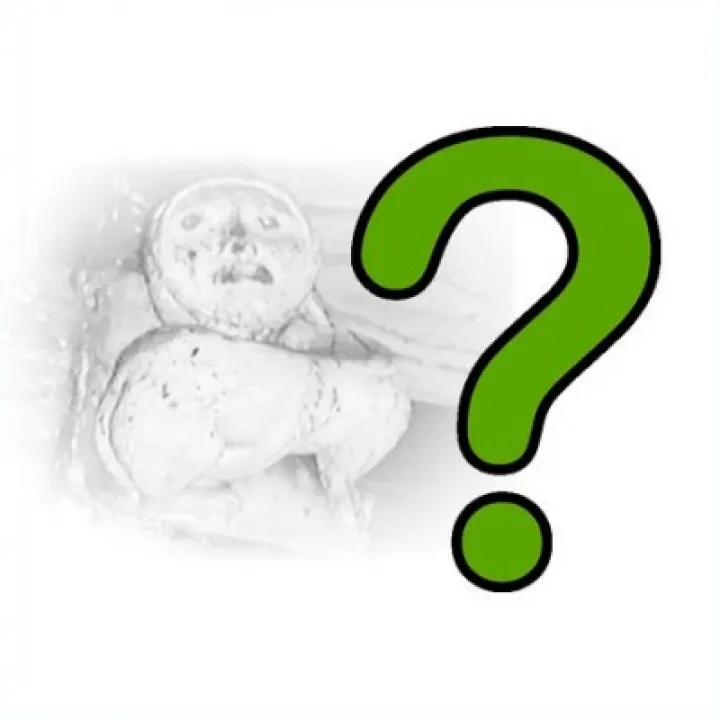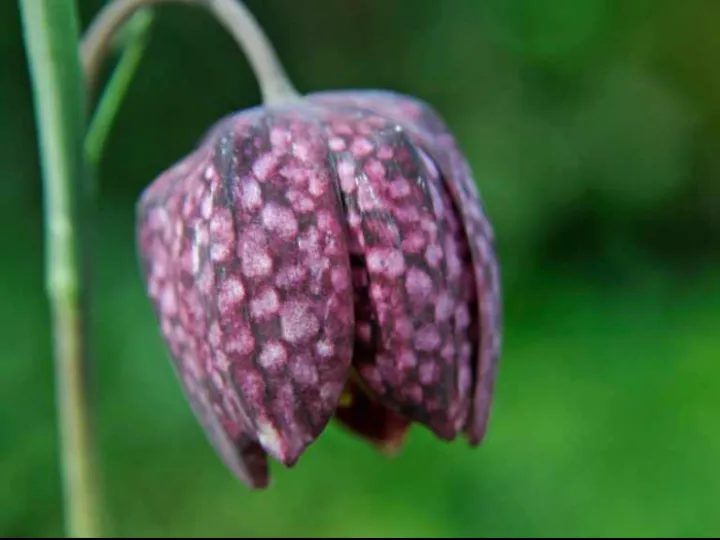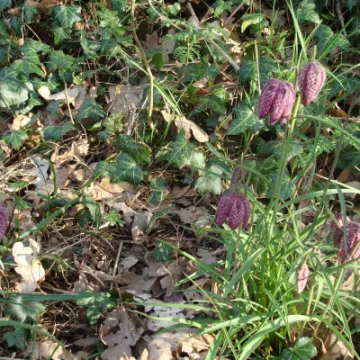Snake's Head Fritilary
[Snake's Head Fritilary
]Fritillaria meleagris
As the woodland has grown and developed, it has been fascinating to see how many wild flowers have arisen quite naturally. It is evident that the 'seed bank' contained within what was formerly good agricultural ground is richly endowed with a large number of locally-common species. The earth-moving involved when the woodland was formed enabled many of them to be brought close to the surface and thereafter to grow enthusiastically in the disturbed ground. Other plants have been deliberately imported – the snowdrops that made such a spectacular show last winter are a good example. Snowdrop plants that were growing well in gardens across the area were collected and planted, subsequently being split and replanted year after year until we have arrived at the profusion of flowers seen lately. We have made a point, however, that every one of the flowers that are growing in our woodland is from a native British plant. Our intention has always been to allow folk to be able to see as many native wild flowers on their walks as possible.
One of the more distinctive wild flowers on view at present (in April) is the Snake's Head Fritilary. Folk names often give a pointer to the nature of the plant and the 'snake's head' (its original English name), was also known in various places as the chess flower, frog-cup, guinea-hen flower, leper lily (because its shape resembled the bell once carried by lepers), Lazarus bell, the chequered lily, the chequered daffodil and the drooping tulip. It is an unmistakeable plant. There is something elegant about its understated and architectural beauty which is so graceful, and its design is so finely adapted for the environment in which it grows. Look out for its chequered, purple, pink (or even white) bell-like flowers, nodding on thin stems between March and May. It has narrow, grey-green, grass-like leaves that appear at the base of the plant (and very occasionally on the stem). When in young growth, the flower buds are tightly encircled by these sheathing leaves, and together they poke vertically up through the grass, looking rather like the nose of a small snake. As their stems elongate, so the flowers arc over to ensure that the pistils and stamens (the 'sexy' bits) contained within their dusky, nodding bells are protected from the rain. Once successful pollination has occurred, the stems straighten again so that the seed pods are held aloft on tall, wiry stems, ready to scatter their seeds to the wide.
Andy Byfield of 'Plantlife' gives the clue as to why these lovely little flowers have become progressively less plentiful as farming methods have changed. "They are hay meadow plants par excellence. Tall, and without any basal rosette of leaves, they soon perish if grazed or cut in full growth: without leaves, no energy is returned to the bulb as they wither, so the plant becomes progressively weakened. Instead, they flourish in those fabulous and all-too-rare hay meadows of yore, flowering amongst the dandelions and lady's smock as the cuckoos arrive, maturing as billows of cow parsley flower under lofty belts of hedgerow elms, and scattering their seeds – finishing their season's business – as the blades of the hay cutting machinery cut and dry the year's hay crop at the height of summer." This also explains why their placing within the woodland is so tricky: they must be allowed to grow in areas of open grass which will not be mowed during the early summer. Our hope is that we will get them to set seed and gradually spread, so that they will form a naturally-sustaining population that does not require the occasional reinforcements that are currently supplied. At present, you will have to hunt to find our few pioneers!
In days gone by, Snake's Head Fritilaries were abundant in hayfields in parts of England and, not that many years ago, the spring markets of Covent Garden were overflowing with the nodding, pink-and white-chequered blooms. But, today, the carpets of this flower that once straddled rivers and adorned wet meadows have become a rare sight. We want to establish Snake's Head Fritilaries in our woodland, so that generations to come will be able to admire this elegant and beautiful (and presently threatened) wild flower.
Quick Links
Get In Touch
TarvinOnline is powered by our active community.
Please send us your news and views.









